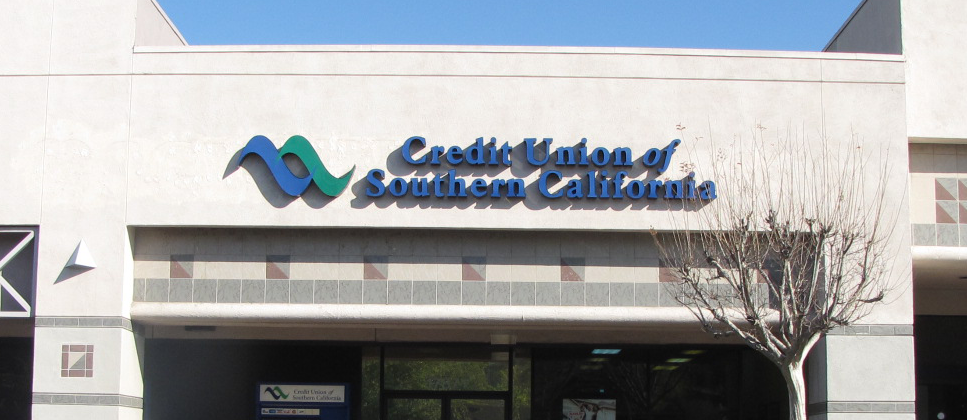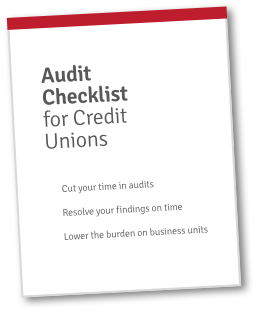Credit Union of Southern California (CU SoCal) is a credit union that serves Los Angeles, Orange, Riverside, and San Bernardino Counties. They are relatively large at over $2.4b, so they require a robust audit program. In addition to the usual business units and experts, they support a two person audit team that coordinates and executes audit activities.
For many credit unions, simply having dedicated staff to manage audits feels like enough. However, CU SoCal set high standards for themselves. And they wanted to make sure their results reflected those high standards.
Download a PDF of this Case Study Now >
Why CU SoCal Looked for a New Approach
Many credit unions typically perform well in their audit program. That is, they rarely (if ever) deal with DORs or other critical findings. CU SoCal was no exception. But the credit union had ambitious growth plans, and that growth was going to require more and more from the audit department. They felt that they needed to not just keep up, but stay ahead of the growth from an audit and assurance perspective.
So, what was holding them back? There were a few issues, but they all stemmed from the same source: using spreadsheets to track audit activities across everyone in the organization was highly inefficient.
Navigating the audit process was slow and labor intensive. Their documentation was thorough, but the lack of centralization meant that the team had to track down and follow up with each finding individually. The document request process was similar—inefficient and without a centralized or organized system. Tracking both processes—the tasks, the people, the due dates—was cumbersome and manual.
They used spreadsheets and emails for audit management and tracking. Neither is suited to the needs of credit union audit environments: “Managing document requests for examinations and external audits took an enormous amount of time with spreadsheets and emails,” said Miriam Neal, Senior Internal Auditor at CU SoCal. “Making sure our spreadsheets were right—as far as who had actually fulfilled tasks and who hadn’t—was difficult.”
Why a New Approach Was Important
The manual process of tracking and following up with tasks was particularly challenging for business units. For them, it was hard to know what was due and when. They didn’t have time to figure out a maze of spreadsheets. They wanted to resolve issues on time, but felt they didn’t have the tools to do so without negatively affecting the credit union’s business priorities.
This was more than an inconvenience—it limited growth and member service. Ramon Davalos, CU SoCal’s VP of Internal Audit, noted that “the impact [of inefficient audits] was pretty significant… It’s a roadblock to moving forward with other initiatives. You have to invest some of your brain power and labor in managing audit activities, which leaves less time and energy to focus on launching a new product, platform, or way of thinking. It’s more than an inconvenience,” he added, “it slows the growth of the credit union.” For Davalos, keeping his team and his business units productive was a necessity for the progress and well-being of the entire credit union and its members. And it all came down to locating better tools to track audit activity and efficiently clear findings in a timely manner.
How CU SoCal Decided on a Solution
The audit team at CU SoCal knew they needed something to increase efficiency and keep their business units engaged. So, they started evaluating different kinds of audit management software. But they soon realized that not all software solutions are created equal.
Many audit management packages are geared toward power users in large organizations. These software solutions offered a broad and powerful set of functions, but they were not a fit for a credit union environment. They were complex enough for a Fortune 500 corporation, yet they didn’t address CU SoCal’s needs.
The audit team at CU SoCal wasn’t worried about complex software for themselves—they knew they could handle whatever came their way. But the existing cumbersome processes frustrated their business units, and they knew that simplicity and ease of use would be major drivers to productivity and adoption. Bringing in better software was an opportunity to give business leaders the tools they needed to be responsive without negatively impacting business operations.
CU SoCal wanted a solution that required little to no training. They had an examination approaching, and they wanted to be able to get up to speed quickly.
How CU SoCal Performed with Redboard
CU SoCal immediately saw a difference with Redboard. Document requests, tasks, and deadlines were easy to track. Business users felt in control instead of overwhelmed. Items were addressed and cleared in a timely fashion. Plus, the central repository and automated audit trail made management a breeze.
Davalos was impressed with the impact. “Our old way of doing audits was more than an inconvenience—it was like a roadblock to moving forward with other initiatives and complex projects,” he noted. But Redboard offered them the precious gift of time. “In time savings, we’ve saved a range between 33% and 40%.”
Redboard offered the “simplicity and ease of use” that Neal was looking for. Most users needed no training at all. “The other platforms weren’t as intuitive or simple as Redboard… When business users saw how simple it was, it didn’t feel like a burden because they didn’t need to learn complicated new software.” She added, “It really made a big difference” to their program.
Ease of use and automation were fantastic must-haves, but the cherry on the top was how quickly Redboard came online. Within a day of signing, CU SoCal had Redboard up and running. Two days later, their business team was using it for their annual exam.
For Neal, the biggest surprise was the fast initial setup time. She said, “one of the things that made it so easy to get up and running efficiently was the responsiveness of the Redboard team. In all my years of experience with different vendors, I think their response to customer service is way above anything I’ve ever seen. It’s been really nice working with a vendor that actually listens to us.” The result, she noted, was “a software package that [works] not only for internal audit departments, but for all the different units within the organization.”
Davalos agrees, noting that Redboard’s “highly intuitive audit and examination software is complemented by a high level of service.”
CU SoCal is looking forward to tackling more projects now that their internal audit and business units are aligned around easily-tracked goals supported by secure, automated organization. “It’s not often that you get management software that you’re excited to learn and get involved with,” said Neal. But that’s just how people feel when they get to spend less time on tedious details—and more time on big ideas.


 Get FREE Access to the Audit Checklist for Credit Unions!
Get FREE Access to the Audit Checklist for Credit Unions!


